Wharton Esherick Museum in Malvern, PA, sits in the quiet woods. It’s a handmade home and studio unlike anything you’ve ever seen. Part castle, part sculpture, and entirely the work of one man, it’s one of Pennsylvania’s most unique museums.
There’s something special about visiting the home or studio of an artist or someone notable. You can literally walk in their footsteps, gaze out their windows, and wonder at the magic that happened there. In the case of the Wharton Esherick Studio, it’s difficult to imagine the scale of art and creativity that had been created in this seemingly normal wooded residential neighborhood in Malvern, PA.
Known as a master craftsman of the American Studio Craft Movement, Esherick created remarkable modern furniture with a sculptural feel. But his art wasn’t limited to furniture. The Wharton Esherick House and Studio were built by the artist himself, creating an enclave of living art with unique architecture that’s truly inspiring, with countless handcrafted details.
For those interested in experiencing this one-of-a-kind artist compound, this guide covers tickets, tours, and must-see details.
Who Was Wharton Esherick? The “Dean of American Craftsmen”
Life and Legacy of Wharton Esherick
The “Dean of American Craftsman,” Wharton Esherick, was born on July 15, 1887, in Philadelphia, Pennsylvania, to a middle-class family. He attended the Pennsylvania Museum School of Industrial Art, where he studied drawing and printmaking, and the Pennsylvania Academy of Fine Arts, where he studied painting.
Esherick and his wife, Letty, moved to an old farmhouse in a then-rural suburb of Philadelphia. They embraced a movement of self-sufficiency, raising their family with the intent to grow their own food and make their own clothes.
After studying painting, drawing, and printmaking, Esherick turned his attention to woodworking after creating frames for his art. He began creating woodprints and then furniture and other furnishings. By 1926, his sculptures were being shown at the Whitney Museum of American Art in New York.
In addition to countless exhibitions over the decades, Esherick created furniture, often one-of-a-kind commission pieces.
He died May 6, 1970.
The Wharton Esherick Museum as a Work of Art
As he needed more space for working, Esherick took to personally building a studio that eventually doubled as his home. A true work of art, the Studio was a project that continued for five decades until his death.
The property is comprised of several buildings. There is, of course, his studio and home, at its core a stone building with a wall of windows bookended with a rainbow-tinged tower. There’s an expressionist-inspired log cabin with a roof that seems to challenge physics with its sharp angles. And his original studio, which now serves as a visitor center with a small museum space, with a panel of shapely windows and corners that seem to lace themselves together.
It was in these buildings that Esherick blended art and life, creating functional yet beautiful wood pieces and experimenting with the art of possibility.
Wharton Esherick Museum Tours: What to Expect
Guided Tours at the Wharton Esherick Museum
Tours are the only way to visit the house and studio. The museum offers several tours to choose from, including a longer tour that focuses more on the architecture.
The standard tour (“Experiencing Esherick Tour”), which I took, is a roughly one-hour docent-led tour with a small group. Because the studio and house are not overly spacious, the small group is the perfect way to experience the property.
The docent was engaging and informative, providing fascinating insight as well as putting Esherick’s story in context with what was happening in the world at that time.
Inside the Wharton Esherick Museum: Highlights of the House
For me, the best part of the tour is stepping inside the studio. From the outside, you’d never guess what’s waiting within.
Inside, every corner reveals a handcrafted detail or a bold design choice that defies convention. A few standouts include:
- The “sculpture well” — a sunken gallery floor designed so Esherick could work on large pieces.
- The spiral staircase — branching in multiple directions, with mismatched stair treads and a mastodon tusk used as a handrail.
- The kitchen nook and dining space — cramped but inventive, with handmade utensils and even a lampshade fashioned from a pot lid.
- The hidden bedroom — tucked behind a trap door, featuring a curving sofa, shelves of books, and cleverly concealed storage.
Throughout the house you’ll also find models and studies for his other works. But it’s the furniture that really steals the show: the ingenious 1958 cabinet desk that unfolds into a full workspace, the elegant music stand and library ladder, and the variety of chairs that blur the line between function and sculpture.
It’s these little touches — the reused materials, the whimsical surprises, the way art and life overlap — that make the Wharton Esherick Museum unforgettable. As my docent put it, this is a place where you don’t just look at art: you walk into it, stand on top of it, and live inside it for a moment.
Planning Your Visit to the Wharton Esherick Museum
How to Get Tickets for Your Wharton Esherick Museum Tour
The museum is open for tours from March through December. The standard Experiencing Esherick Tour (about an hour long) includes both the house and studio. Additional specialty tours are offered occasionally, such as architecture-focused visits.
- Tour days: Wednesday through Sunday
- Advance reservations required: tickets must be purchased online via the museum’s website
- Group size: small groups only, due to the intimate nature of the space
- Pricing: check the museum’s website for current ticket costs
How to Get to the Wharton Esherick Museum in Malvern, PA
The museum is located at 1520 Horseshoe Trail in Malvern, PA, about 45 minutes west of Philadelphia by car.
Parking is limited to street parking in front of the property.
Accessibility
The studio and home were designed for living, not as a public museum. As a result, accessibility is limited:
- Narrow and uneven floors
- Multiple staircases (including the spiral staircase)
- Not wheelchair accessible
The museum provides a helpful informative pamphlet so visitors can plan ahead.
Visitor Tips for the Wharton Esherick Museum
To enjoy the tour fully, keep a few things in mind:
- Arrive early — explore the visitor center or the exterior before your tour begins.
- Wear comfortable shoes — floors are uneven and stairs frequent.
- Don’t touch the art — the house is full of delicate handmade pieces.
- Bring a camera — photography is allowed for personal use, though lighting can be tricky inside.
Make it a Day Trip from Philadelphia
The Wharton Esherick Museum makes an excellent stop on a full-day trip from Philadelphia. Combine your visit with one (or more) of these nearby attractions:
- History: Valley Forge National Historical Park — ideal for picnics, trails, and Revolutionary War history.
- Gardens: Longwood Gardens — one of the region’s premier botanical destinations.
- Art & Design: George Nakashima Woodworker Complex in New Hope, PA — another master craftsman’s workshop open to visitors.
- Towns to Explore: Malvern, Phoenixville, and West Chester all offer walkable downtowns with shops, restaurants, and local charm.
Is the Wharton Esherick Museum Worth Visiting?
Absolutely. For anyone interested in art, design, or architecture, the museum and studio offer an immersive experience unlike any other. Touring the house is not just about looking at art — it’s about walking through it, standing on it, and experiencing the world as Esherick created it.
Whether you’re an art lover or just looking for one of the most unique day trips from Philadelphia, the Wharton Esherick Museum is an unforgettable experience. Be sure to book your tickets in advance and prepare to be inspired!
What’s your favorite artist’s home that you’ve visited or is on your bucket list?
Save this post for later on Pinterest!
All photos, as well as opinions, are my own.
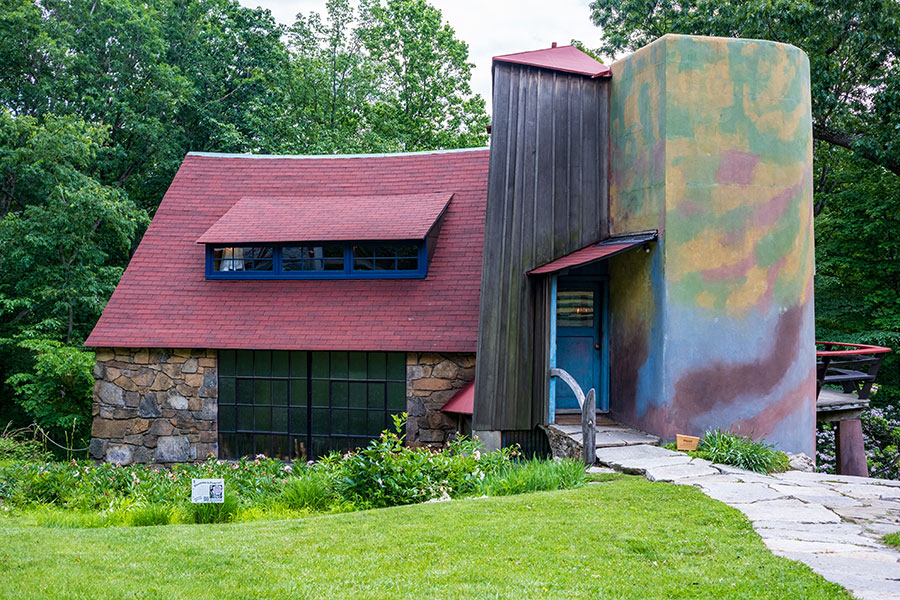
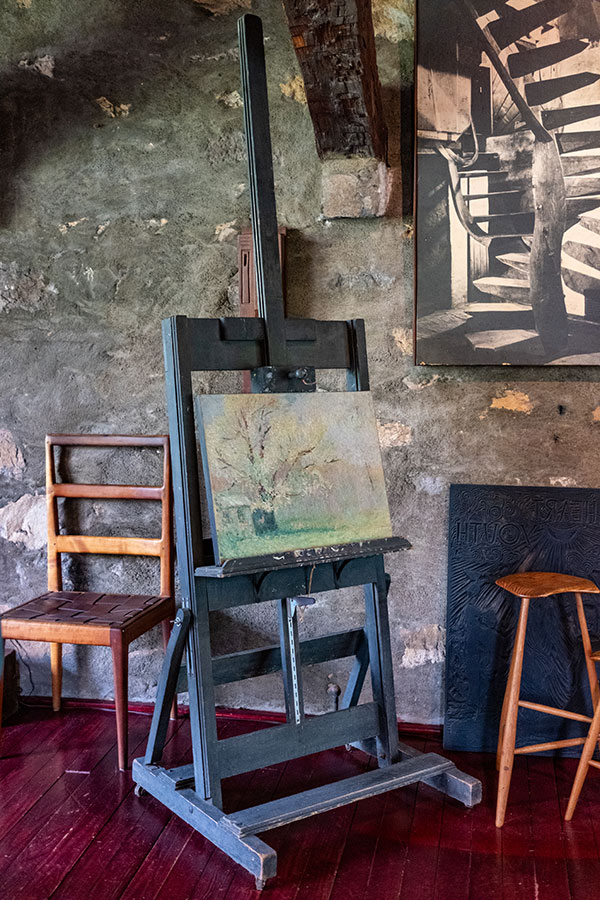


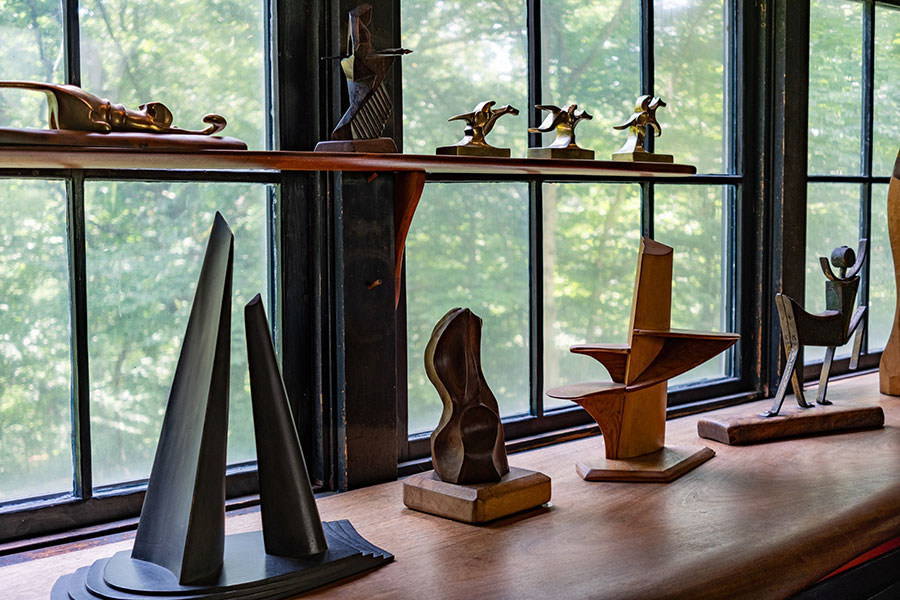
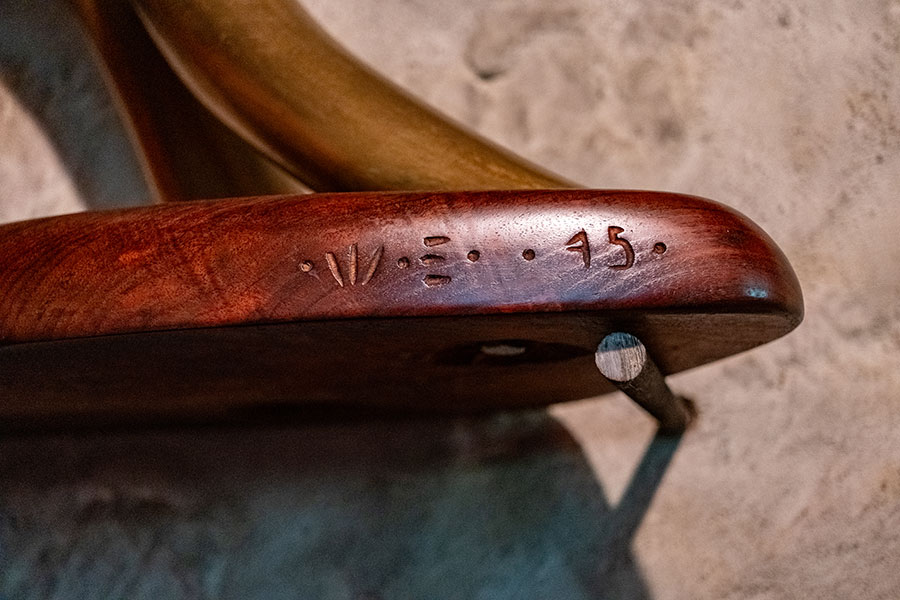
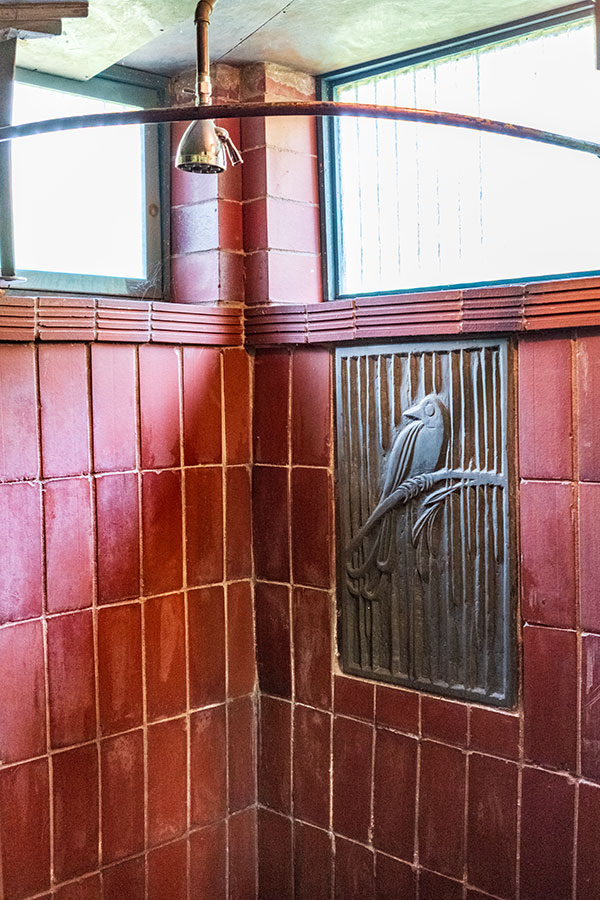
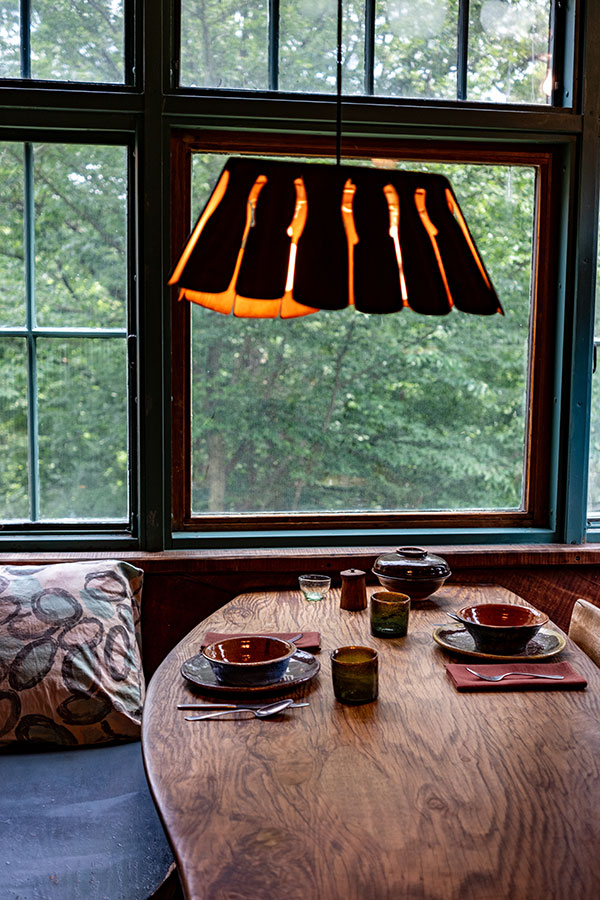
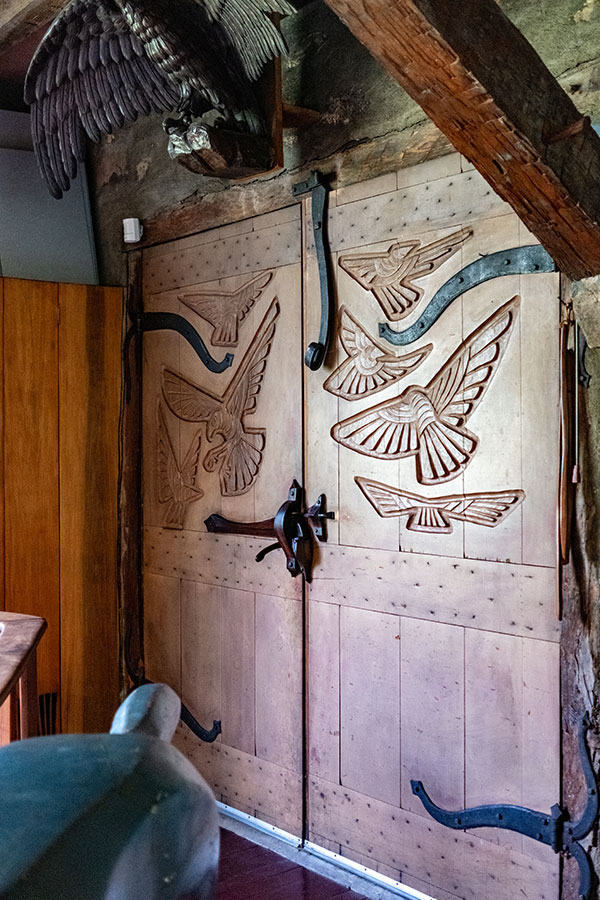

This article beautifully captures the unique blend of art and life at the Wharton Esherick Museum. The detailed descriptions make me eager to visit, especially the whimsical studio and one-of-a-kind furniture pieces! A truly inspiring read.